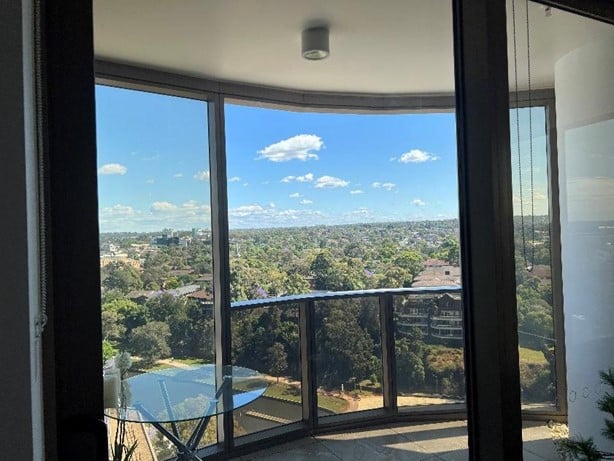
Imagine you are on the couch, watching your television, and suddenly the balcony door and adjacent façade behind you start banging loudly and then soon after the television starts to wobble and the internal partitions start vibrating. This is what it is like to experience the Helmholtz effect. You may be surprised to hear that occurrence of this phenomenon is increasing
This starts with the configuration of the balcony space adjacent to the façade. More specifically if it is a wintergarden with one single fixed opening, which would configure the balcony in the same way as an organ pipe or whistle. The same effect can sometimes be experienced to a lesser degree if one is in a moving car with one window partially open.
So far, we have only seen this effect occur where the balcony is configured as a wintergarden and incorporates a fixed opening that is configured as a 3-sided orifice (i.e. a fixed balustrade below that connects to the floor and full-height side panels or walls that extend out from either side, in-line with the aspect of the fixed opening).
As the wind moves across or into the opening (this effect does not tend to occur when the opening is in the lee of the building, relative to the wind direction), the external pressure fluctuations tend to become organised into a narrowband pulsating frequency. It is possible to calculate that frequency and often it will tend to be very close to the natural frequency of a glass panel or mullion. The close frequencies would set off a tuning fork effect that results in significantly increased amplitude of oscillation of the façade to the point where it could in some cases engage the floor slab which in turn would start shaking the furniture (including the television!) and internal walls.
The simple solution is to avoid wintergardens. If you must have a wintergarden then you should consider at least to provide louvres in the fixed opening, although this is not an ideal solution as it only solves this problem when the louvres are shut, and some planning authorities will count the balcony as part of the indoor floor area in that case.
Some of the solutions that we have proposed in the past include the following:

Windtech offers a preliminary assessment of this effect as part of their comprehensive desktop wind noise assessment for new developments. This wind study is highly recommended, especially for residential developments.
If you need assistance with a Helmholtz Resonance effect in your project, please reach out to our dedicated wind engineers at our regional offices in Sydney & Melbourne, Australia, London, UK, and Mumbai, India. New York & Miami, USA, Toronto, Canada, Dubai, Hong Kong & Singapore, we guarantee to support you wherever you are based.
To get regular updates on news and events, please follow us on our LinkedIn page.
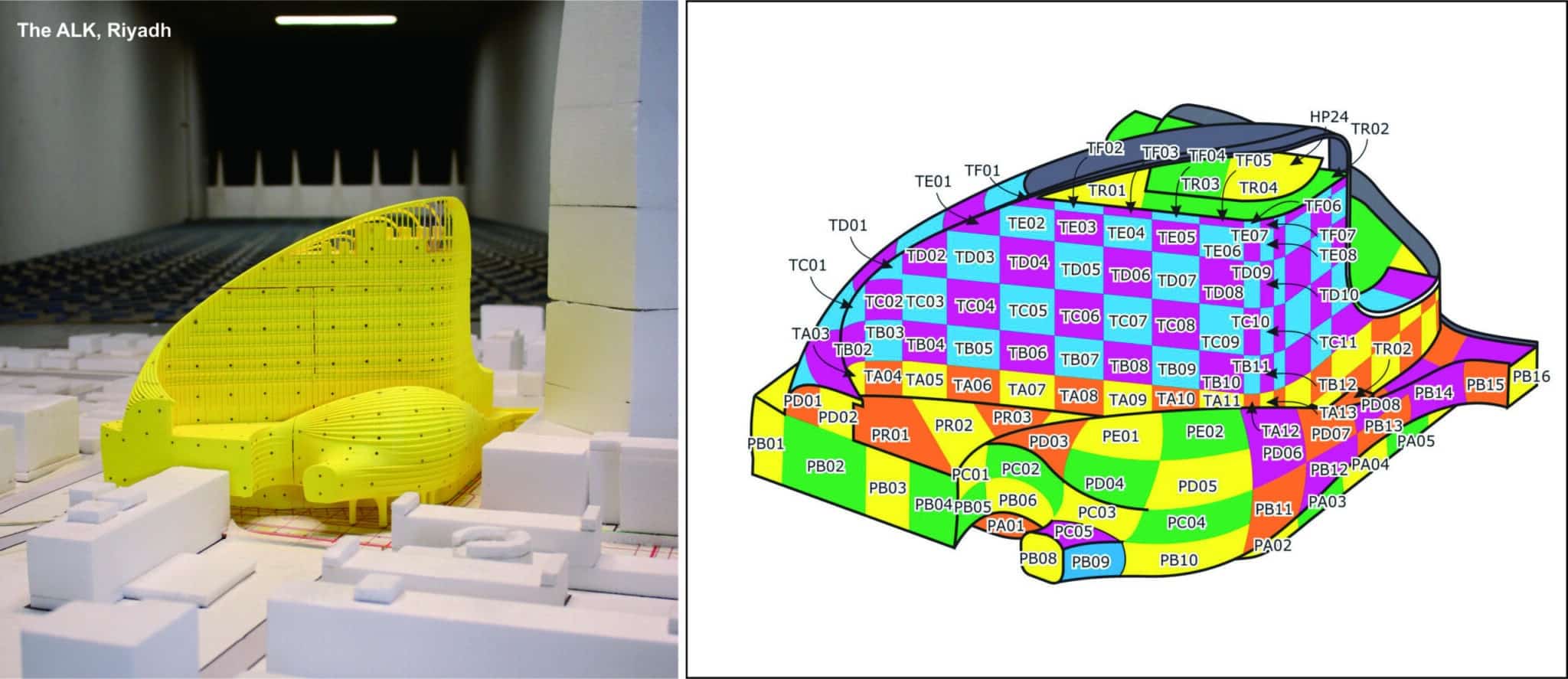
Buildings of different heights and shapes require different approaches when it comes to selecting the appropriate technique used for wind tunnel testing to determine the wind actions on the structure. When we need to bake a cake and we do not use a frying pan and we do not use an oven to make scrambled eggs. This issue is no different. This article provides some key tips when specifying scope for a wind tunnel study to determine the structural loads on a large building.
A “tall” building is generally one where the motion of the building in the wind can significantly influence the total peak load. In technical jargon, we refer to such a building as having a significant resonant dynamic response. Such buildings are typically greater than 15 storeys (45m/150ft) in height. For tall buildings, we tend to assess the dynamic wind actions on the structure, including the effect of the dynamic properties of the structure itself on these dynamic loads.
The outputs of such a study consist of the following:
For the vast majority of tall buildings, either a rigid aerodynamic model is used in the wind tunnel – using either a High-Frequency Force Balance or a Pressure Integration method. At Windtech, we use both methods, but as we also have a high-quality pressure measurement system with minimal phase lag, high sampling rates, etc., the latter approach is better as it enables us to more accurately determine the vertical distribution of the load cases.
So, what happens if a building is less than 15 storeys in height? Firstly, in most cases, the wind loads do not govern unless it is in a cyclonic region that is also not subject to very high seismic loads. From our experience, buildings close to 15 storeys in height located in cyclonic regions have benefited from a wind tunnel study in significantly reducing the design wind loads and with significant impacts on the bottom line in terms of construction costs. The issue with buildings that are 15 levels or less in height, particularly those with a large footprint or a complex form, is that the horizontal distribution of the wind loads is often more important than the vertical. For these, it would be far more helpful to present the resulting design load cases in the form of surface panel pressures or externally applied point loads.

In contrast, some buildings are so tall or slender that their own deflection/movement can either reduce or increase the peak dynamic response. This phenomenon is referred to as aerodynamic damping. For these, we recommend an aeroelastic model study, which is the only way we can reliably determine the above phenomenon for each different angle of attack. The Quality Assurance Manual for Wind Engineering, first published by the Australasian Wind Engineering Society (AWES) in 2000 and recently updated in 2019, provides some guidance on when this effect becomes significant and for which building plan shapes. For these buildings, it is important to use a dynamic model in the wind tunnel that accurately represents the relative stiffness of the sway modes, the structural damping, mass density, and distribution, and is tested at the same reduced velocity as the full-scale building. This technique is referred to as an aeroelastic model study.
Windtech director, Tony Rofail, a key author of the AWES Quality Assurance Manual for Wind Engineering, says, “Some very tall rectangular plan buildings can significantly benefit from an aeroelastic model study as they generally tend to bring down the peak response – however, it would be dangerous not to do so for other shapes where the loads can easily go the other way.”
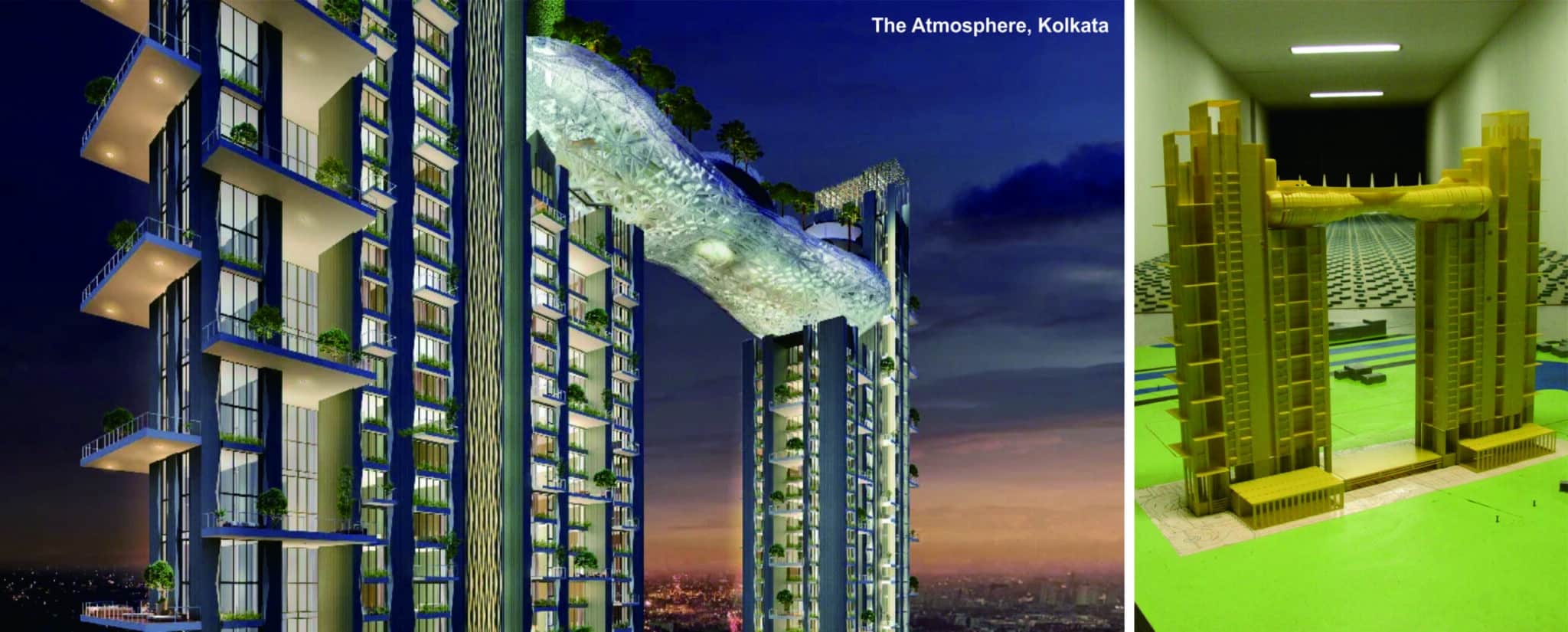
In 2007, Tony Rofail published a method on how we can determine the effect of a structural linkage between tall buildings at high elevation (more than 20% of the height of the taller of the 2 buildings). This method enables the development of a rationalised set of critical load cases rather than the earlier practice of going blind and providing hundreds of load cases to the structural consultant. A rigid linkage can have a significant effect on the response of the two linked sub-structures, and the taller/more dynamic the structure, the more significant the effect.
If you are working on any projects that could benefit from the capabilities presented in this article, please reach out to our regional office via our Contact Us page.
To get regular updates on news and events, please follow us on our LinkedIn page.
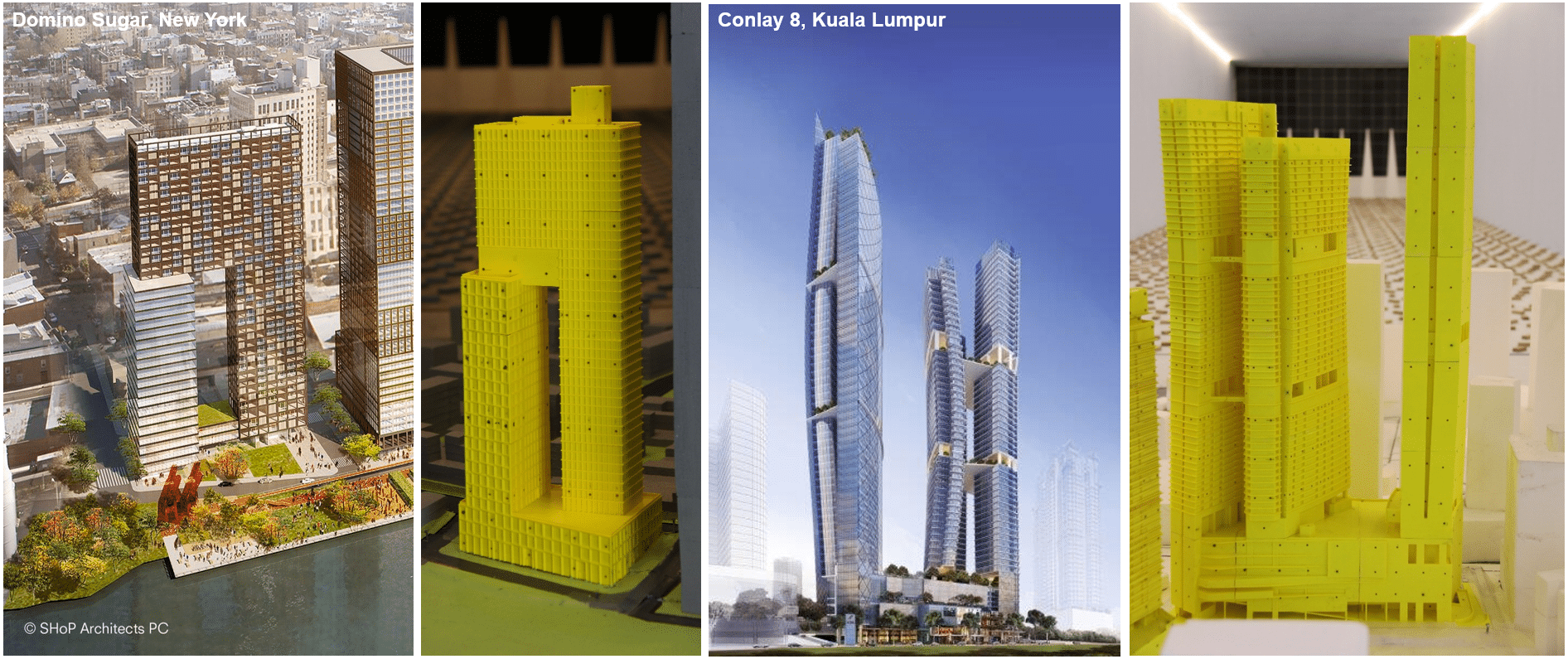
Large construction projects are challenging enough without having to now navigate the recent increases in the cost of materials and labour. The cost of construction is one of the biggest challenges that developers face today, especially given the current global economic conditions. However, there is a little-known solution that can help to reduce the cost of construction typically in the order of 10-20% without impacting the design or quality of the building. The solution is performance-based wind design, specifically through wind tunnel testing and the adoption of advanced data analysis and probabilistic methods, which can help in further optimise the design of structure and façade, reduce material waste, and improve sustainability, all of which has a material impact on reducing embodied carbon associated with a project.

Figure 1. Sample Projects Tested in Windtech’s Boundary Layer Wind Tunnel
The prescriptive code-based design approach can be limiting, as it does not allow for flexibility and innovation. It also does not consider the specific wind loads and environmental factors that a building may encounter in its context. Hence the various committees that govern code content deliberately make them conservative and limit their scope to the typical building.
Wind tunnel testing is by its nature a performance-based design tool that provides an alternative option to the code-based design approach. It is a process that involves placing a scale model of an “as-designed” building in a wind tunnel within a model of the surrounding buildings, simulating the wind flow for multiple wind angles, and post-processing the data to determine full scale loads on structure and cladding. It does not need to adopt unnecessary levels of conservatism as it tries to produce wind effects that represent reality. However not all wind consultants are the same, as they adopt different methods for loads on structure and cladding, in addition to assessing the building performance under normal serviceability conditions. This aspect alone can make the difference between a 10% or 20% construction cost saving.
Aaron Lefcovitch, a Director of Windtech based out of the Singapore office explains “When, on occasion, the response of a building or structure to wind action has been compared between two of more wind consultants, it has been noted that a major source of difference has often turned out to be the way the wind consultant deals with directionality. Several methods have been proposed to deal with directionality, however some of these methods which are widely used, have significant limitations that could result in substantially under or over predicting the wind loads on the structural system or facade cladding. Windtech uses the multi-sector method (for more information see: Directionality: A key source of discrepancy between the results of Wind Consulting Companies | LinkedIn) which has been recognised by the ASCE Manual of Practice No. 143 (Design and Performance of Tall Buildings in Wind) as being the most sophisticated method of accounting for directionality with the least amount of approximation (and conservatism). Windtech is the first wind engineering firm to implement the more rigorous multi-sector analysis technique more than a decade ago. In doing so, we have been doing our part by bringing advanced technologies to the market which have a material impact on cost, design efficiency and sustainability, though the use of more pure performance-based design methods. Applying the latest advances in the wind engineering industry remains to be one of the core focuses of the team at Windtech, and we continue to develop these technologies on an ongoing basis to serve our clients”
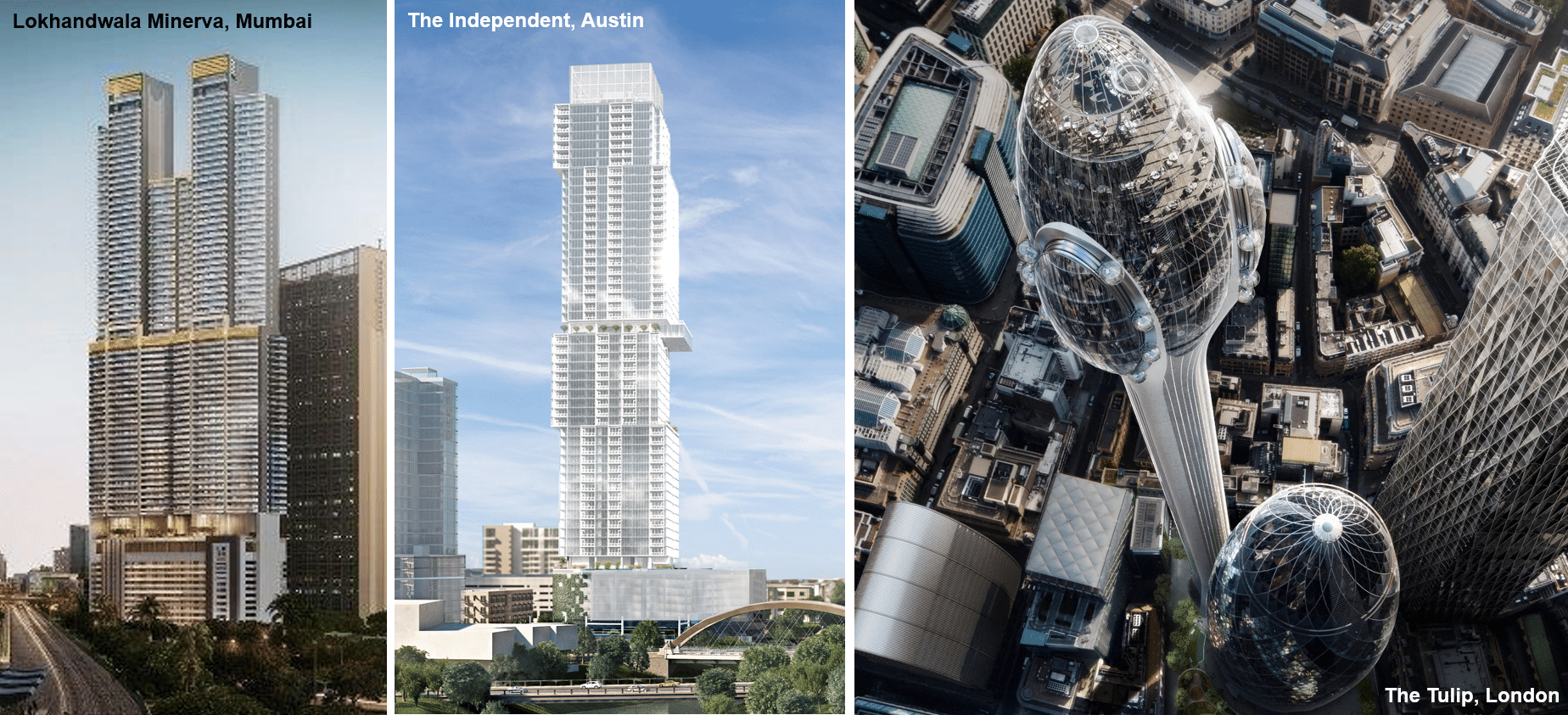
Figure 2. Sample Projects Tested by Windtech
Wind tunnel testing is a useful tool for tall building design because it provides crucial information on how a building will respond to wind loads, particularly under normal serviceability wind conditions. Codes and Standards often require buildings to meet specific criteria for deflection and acceleration, and if these criteria are exceeded, additional costly structural rework or auxiliary devices like dampers may be required to bring the building accelerations within permissible limits. Wind tunnel testing also ensures that some of these costly measures are not implemented into a building unnecessarily. In combination with Windtech’s advanced multi-sector method we can assist the design team in eliminating the unnecessary costs, allowing the opportunity to optimise the structural design and minimize material waste and/or damping systems that may in fact not be required. This all has a material impact on also reducing the risk of costly delays which would also impact a projects bottom line, assuming the building does not comply from a performance point of view.

Figure 3. Sample Special Projects Tested by Windtech
Tony Rofail, a Director of Windtech based out of the Sydney office adds that “wind tunnel studies generally result in 10-15% reduction is cost of a major development up to lockup stage (façade and structure). However, a study conducted of over 55 typical tall building projects indicated that the more rigorous Multi-Sector analysis technique was not only more accurate from a loads and dynamic responses point of view, but in fact resulted in an additional 5-10% saving in the cost of the structure and façade. Even greater savings can be achieved for the very tall or slender developments (however many of these would tend to fall outside of the scope of wind loading standards anyway). A small investment in the use of rigorous techniques pays significant dividends down the track, and we are not talking 10% or 20% – it is typically in the order of 2,000% to 5,000%!. This is why the more successful developers don’t think twice about commission Windtech”
If you are working on any projects that could benefit from the capabilities presented in this article, please reach out to our regional office via our Contact Us page.
To get regular updates on news and events, please follow us on our LinkedIn page.
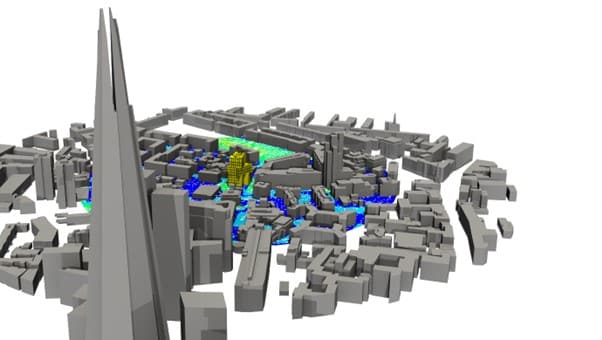
Wind studies for building construction projects can take on different forms depending on their purpose. Some studies aim to ensure the structural integrity of tall buildings against extreme weather conditions like typhoons or hurricanes. Others may focus on mitigating the impact of wind from a serviceability point of view i.e. wind induced noise and wind driven rain.
One of the most frequently conducted wind studies is the assessment of Pedestrian Pedestrian Wind Environment Impacts. These studies are crucial in ensuring the safety and comfort of pedestrians in critical outdoor areas within the urban landscape. They do this by identifying areas that are subject to adverse wind conditions including the mechanisms behind them. This then allows for the development of treatment strategies to ameliorate the impacts which impact the design. This article aims to offer insights on how to minimise the risk to project budgets and timelines as a result of these necessary and helpful studies being implemented as part of the design process.

Pedestrian Wind Environment Analysis on a project in London
Known as “Pedestrian Microclimate” or “Pedestrian Wind Comfort” studies, the assessment is essential for ensuring safe, comfortable, and functional outdoor spaces for pedestrians. Windtech, with decades of experience in Pedestrian Wind Environment studies, recognises that working collaboratively with clients and keeping them informed about best practices is vital for meeting and exceeding expectations.
So, when conducting Pedestrian Wind Environment studies what are some tips to minimise the risk of wind mitigations impacting your project’s timeline and budget. Here are our top three:
At Windtech, we offer preliminary pedestrian wind environment assessments that can identify high-risk areas and advise on the best approach based on the location, timeline, and specific project requirements. Depending on the project size and complexity, we may recommend a desktop assessment or a CFD study.
Getting an early-stage assessment allows us to assist in developing integrated, elegant, and cost-effective wind mitigation strategies that are harder to implement at later stages of the design process. After agreeing on a strategy, we may suggest preliminary mitigation testing, usually through CFD, to accurately quantify the effect of the proposed strategy and make any necessary adjustments. This approach helps to streamline the design process and ensure a successful outcome for your project.
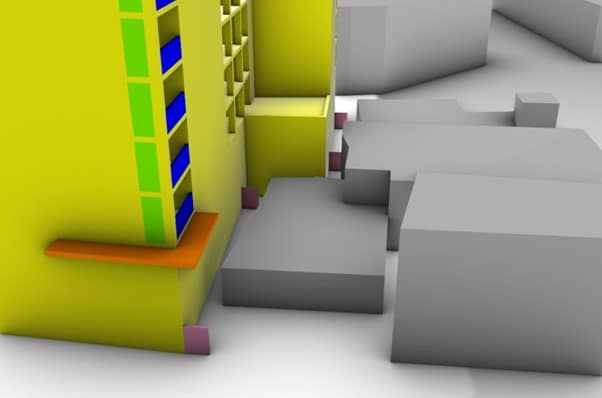
An example of wind mitigation being tested using a CFD model
At Windtech, we believe in identifying potential high-risk areas in your development as early as possible, so you can integrate effective wind mitigation measures without compromising on the overall design. By contacting us during the initial stages of your project, we can provide you with a competitive scope, fee, and timeline, and guide you towards the appropriate guidelines.
We understand the importance of time in any project and take pride in developing customized wind mitigation solutions that are not over-specified. To ensure a successful outcome, we recommend starting with a detailed wind tunnel and/or computational fluid dynamics (CFD) study as soon as the building envelope has been set. This allows for sufficient time for at least one round of wind mitigation tests, if needed, after we provide our initial report.
We acknowledge that time constraints are always a challenge, but engaging with us early in the design process will make the entire process less stressful and lead to a better overall design outcome. Request a quote today and allow us to help you mitigate the potential risks of wind impact on your development.
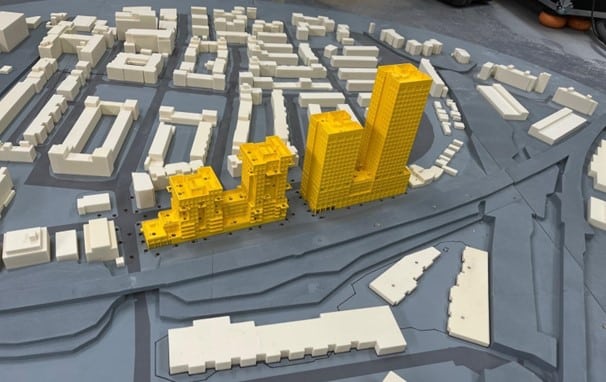
Pedestrian Wind Environment Wind Tunnel Model Showing Probe Locations
Although wind engineering may seem simple, acquiring a deep understanding of how wind interacts with buildings and affects occupants can take years or even decades of experience. However, once you acquire this knowledge, you’ll be able to identify potential risk areas and recognize primary flow effects that could impact your project’s development.
To start, we suggest determining the predominant wind direction in the area and analysing the impact of downwash and funnelling on the building. This will help you gain a comprehensive understanding of how wind can affect the development of your project.
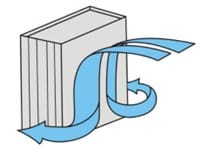
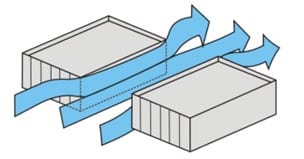
Downwash???????????????? Funnelling
A simple guide (which discusses other potential wind mechanisms) is provided here: https://windtechconsult.com/20-seriously-effective-wind-mitigation-strategies-for-your-next-project/
Alternatively, why not schedule a presentation with one of our team members? With offices in Sydney & Melbourne, Australia, London, UK, and Mumbai, India. New York & Miami, USA, Dubai, Hong Kong & Singapore, we guarantee to support you wherever you are based. Get in touch here.
It is not uncommon for clients to approach us with the belief that their project has no wind issues because they have already conducted a basic CFD analysis that did not identify any problems. However, we have seen instances where off-the-shelf CFD software or studies undertaken with unproven methodologies have led to results with a significant discrepancy of 40-50% against wind tunnel test results. This discrepancy can lead to a false sense of confidence in the scheme’s wind environment performance, which could result in an unpleasant surprise during the final, detailed wind tunnel study assessment. Therefore, it is essential to be cautious of the quality of the CFD analysis and to validate the methodology before relying on its results.
We recommend reviewing further information on benchmarking and validation of CFD simulations applied to the pedestrian wind environment around buildings, which can be found in the links provided below.
1. AIJ guidelines for practical applications of CFD to pedestrian wind environment around buildings: https://www.sciencedirect.com/science/article/abs/pii/S0167610508000445
2. AIJ Benchmarks for Validation of CFD Simulations Applied to Pedestrian Wind Environment around Buildings https://www.aij.or.jp/eng/publish/vsapwe2016e_tb_of_cont.pdf
3. Best Practice Guideline for the CFD Simulation of Flows in the Urban Environment: COST Action 732 Quality Assurance and Improvement of Microscale Meteorological Models: Best_Practice_Guideline_for_the_CFD_Simulation_of_Flows_in_the_Urban_Environment
Do you need help with an upcoming project? Don’t hesitate to contact our dedicated Global Wind Engineering team, who will gladly assist. With offices in Sydney & Melbourne, Australia, London, UK, and Mumbai, India. New York & Miami, USA, Dubai, Hong Kong & Singapore, we guarantee to support you wherever you are based.

Building design and construction is a complicated process that includes a variety of variables and elements that must be taken into account to ensure performance, comfort and safety. The evaluation of wind loads on buildings and structures, which can significantly affect their stability, performance and overall efficiency, is one of the most crucial steps. They give engineers and designers the knowledge they need to make accurate and informed assumptions when progressing from design concept to detailed design of the building from landscape design to the design of the façade and structure.
Physically replicating wind actions on buildings and other structures is done in wind tunnel testing. A wind flow structure is set up in the wind tunnel that simulates the behaviour of the real wind at the same scale as that of the model. Wind Engineers can utilise this information to accurately observe how the structure responds to the wind loads. The capacity to quantify physical forces and deformations directly, as well as the ability to see and examine the wind flows around the structure, are all benefits of wind tunnel testing.
On the other hand, CFD testing is a numerical way of simulating wind loads on structures and buildings. This kind of testing is frequently carried out with the aid of computer software, which computes the wind flow around the subject building using mathematical models. When assessing the combined effect of wind and thermal effects, snow or rain, which are challenging to model using wind tunnel testing, CFD testing offers a highly detailed, three-dimensional representation of the combined effect of these various elements. However not all CFD modelling is the same and the more accurate modelling required complex turbulence models, a fine computation mesh and time steps, all of which require significant time and computational resources. Windtech is able to overcome the limitations of computation time by using a very significant size computation cluster. Windtech has been able to demonstrate that with such care and fine resolution, it is possible to model the flow around buildings to match those from wind tunnel results. However, there are still limitations in the accuracy of CFD when it comes to assessing the dynamic wind actions on façade and structures, particularly when the subject building is located within the vicinity of other buildings.
Hence the two techniques are complementary and each has its role in informing the design team in relation to the effect of wind on occupant comfort as well its effect on the structure and façade.
Our team of professionals at Windtech Consultants have contributed substantially to the standards that govern the practice of wind engineering and include world leaders in both wind tunnel testing methodologies and CFD. We can assist in recommending to you the best options to match your requirements and what is most appropriate for your project.
Need help with an upcoming project? Don’t hesitate to contact our dedicated Global Wind Engineering team, who will gladly assist. With offices in Sydney & Melbourne, Australia, London, UK, and Mumbai, India. New York & Miami, USA, Dubai, Hong Kong & Singapore, we guarantee to support you wherever you are based.